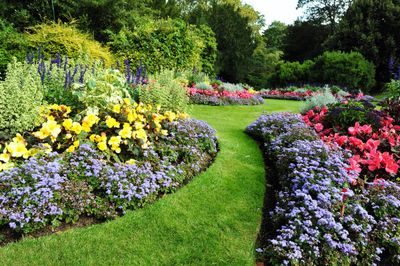Designing an Asymmetrical Garden
In simple terms, a garden bed is designed around a central point, which may be an object such as a plant, a front door, a tree, or a container. The central point can also be unseen, or imaginary. You can have either symmetrical or asymmetrical garden design layouts. A symmetrical garden design is equal on both sides of the central point. For example, a large shrub on one side is mirrored by a nearly identical shrub on the other side. These are normally what you think of when discussing formal gardens. An asymmetrical design, on the other hand, is still balanced around the central reference point, but in a way that one side differs from the other. For example, one large shrub on one side may be balanced by three smaller shrubs on the other. To provide balance, the total mass of the smaller shrubs is somewhat equal to the larger shrub.
How to Make an Asymmetrical Garden
Asymmetrical garden ideas abound and are dependent on the individual gardener but all share the same basic design principles:
Flower beds: Determine your central reference point. Plant a couple of taller plants on one side, then balance them with lower growing ferns, hostas, or ground covers on the other side. An entire garden space: Populate one side of the space with large shade trees, then provide balance with masses of colorful low growing perennials and annuals. Garden gates: Arrange a cluster of lower-growing shrubs or perennials on one side, balanced by a large garden container or columnar shrub on the other. Steps: If you have garden steps, arrange large stones or boulders on one side, balanced by trees or taller shrubs on the other side.
